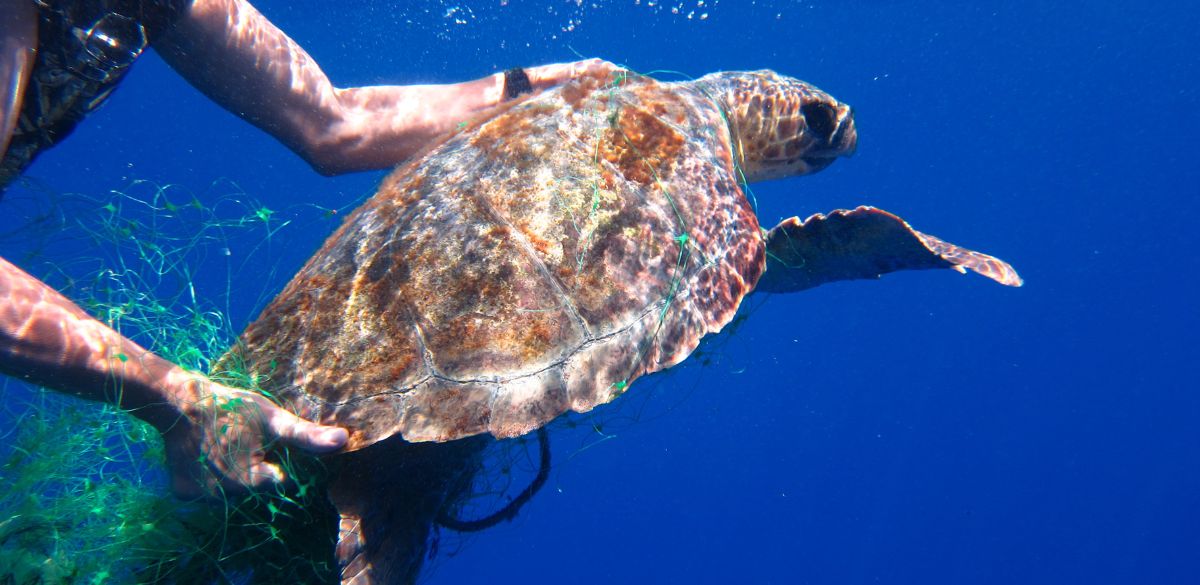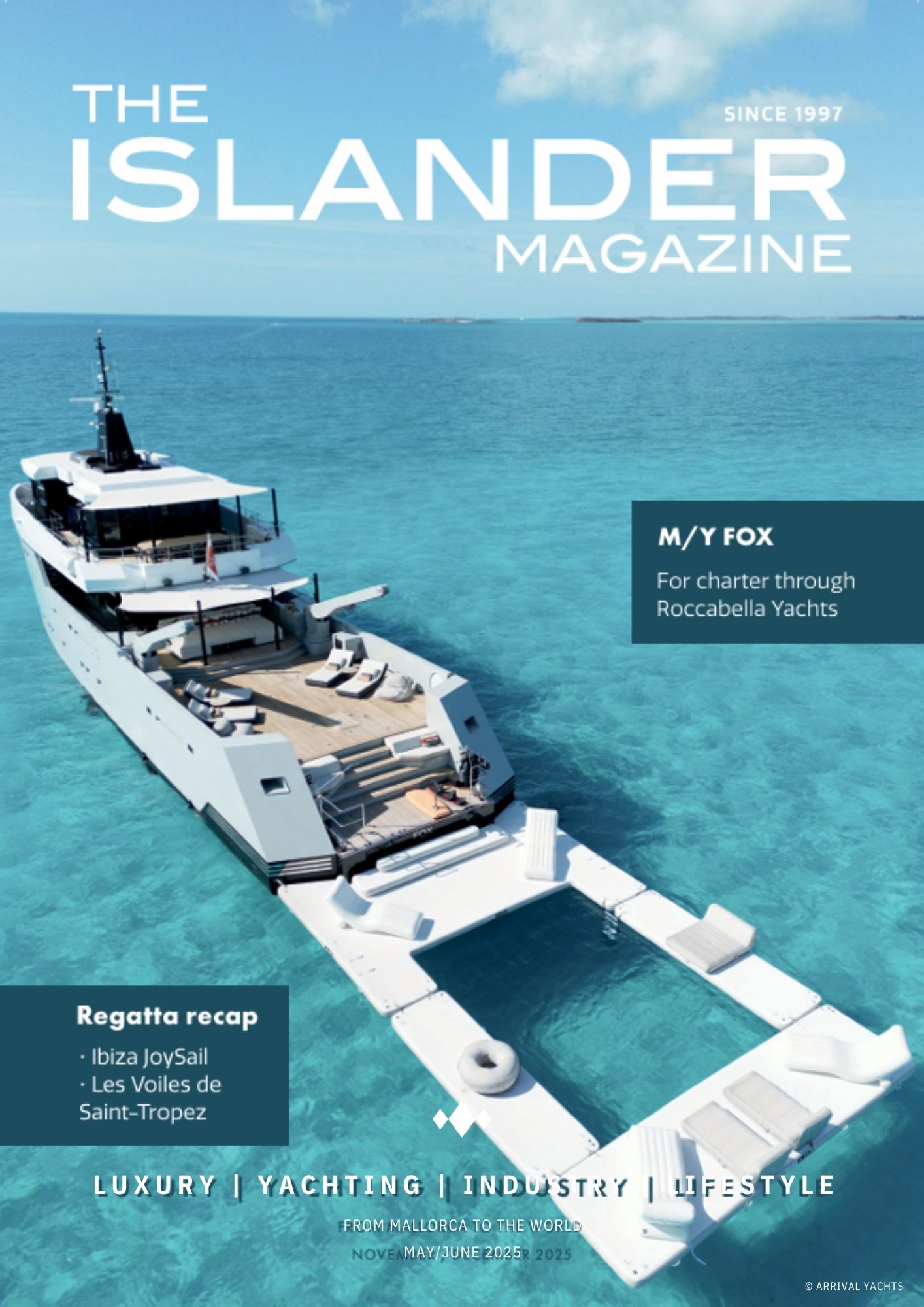In the context of the EC project LIFE OASIS, port, fishers, and navigators play a key role in the management and prevention of the risk of marine litter adrift, and very specially abandoned and lost fishing gear (ALDFG), also known as “ghost fishing”.
ALDFG is a threat to marine wildlife, to the sustainability of fishing and safety at sea, and this brings together different stakeholders in a concerted basin-wide effort necessary to tackle such a global risk.
Whereas most of the effort of engaging stakeholders has focused on the fishing, transport and safety and security sectors, very little has been achieved with regards to the nautical tourism sector. The team at LIFE OASIS believes it is crucial to tap into this potential flotilla of custodians of our seas.
The Mediterranean Sea is a bustling maritime corridor, frequented daily by over three thousand vessels , ranging from passenger ships and yachts to cargo ships, as evidenced by data from the online maritime monitoring service.
It’s the number 1 hotspot of navigation, with over 35% of the World’s maritime cargo traffic, an intensive coastal and offshore fishing effort and one of the most attractive basins for the yachting industry, with over 10,000 marinas and 48,000,000 yachts.
Yachting is critically important to the Mediterranean as a global hub for the industry, fostering significant economic benefits for local economies through job creation and infrastructure development, while also offering unparalleled opportunities for tourism, cultural immersion, and luxury experiences to visitors with its unique combination of history, diverse cultures, and stunning coastlines. It is a primary market for yacht charters and a key destination for a substantial portion of the world’s superyacht fleet, driving seasonal demand and supporting a vast network of businesses and services along its coasts.
The Mediterranean yachting industry is a major economic force, with the Italian yachting industry alone contributing €22.7 billion annually and employing 157,000 people as of late 2024. The region attracts high demand for luxury travel, with a record 1,570 superyachts over 24 meters cruising in July alone, and over 400,000 berths available across the Mediterranean. This significant growth in the superyacht market and infrastructure signifies a booming sector in need of further infrastructure development and sustainable practices.
The Mediterranean is the world’s primary yacht charter destination, attracting a large portion of the global superyacht fleet, creating substantial demand for services and luxury offerings.
The yachting industry creates numerous jobs, from crew staff to marina workers and those in associated service industries, providing significant employment opportunities for local populations.
Yachting generates significant revenue for Mediterranean economies through port fees, fuel sales, provisions, and onshore activities like dining and shopping.
It offers a luxurious and exclusive way to explore the region’s sun-drenched shores and crystal-clear waters, catering to a high-end market.
Yachting provides unparalleled freedom to create personalized itineraries, allowing access to secluded coves and off-the-beaten-path locations not easily reached by land.
It enables visitors to immerse themselves in the region’s rich history, vibrant cultures, and breathtaking natural beauty in a way that traditional tourism cannot match.
In the Mediterranean, yacht charters facilitate unique cultural experiences, allowing travelers to explore ancient cities, historic towns, and diverse islands that dot the Mediterranean coastline.
A yacht provides a unique vantage point to appreciate the area’s profound historical significance, from ancient ruins to picturesque villages.
The Mediterranean has a well-developed infrastructure of marinas and recreational ports designed to support the extensive yachting industry.
The region experiences a critical “yacht season,” particularly in the summer, which is a crucial window for both the charter and superyacht markets, driving activity from late spring to late autumn.
HOW IS THE YACHTING SECTOR COLLABORATING WITH PROJECT LIFE OASIS?
Apart from an amazing infrastructure and a setting with unique cultural and historical treasures for the navigator, the Mediterranean offers unique natural values with its deep blue and crystalline waters and an amazing marine biodiversity resulting from the intersection of three biogeographic areas.
Sailing in company of dolphins, anchoring in a Mediterranean cove with clear waters, snorkeling over reefs and posidonia grass prairies over beautiful white sands is an unbeatable experience.
Aware of the fact that good sailors and good travellers don’t like marine litter, murky waters and dangers adrift, LIFE OASIS is reaching out to navigators to engage them in the important tasks of: cutting the line is not the solution, but rather a death sentence.
- ALDFG reporting and retrieving
Many will ask, “yeah, but where does this data go? Is it worth my while to spend my time on this?” The answer is that yes, this data is important and at LIFE OASIS we will use it to make it count. Currently, we have a data set of over 800 reports. The more reports the better we can put the spatial modelling tools identify the risk source and adopt concrete prevention and management measures.
- Rescue of entangled marine turtles
The Mediterranean has an entire network of recovery centers with trained veterinarians and volunteers capable of taking care of injured turtles. But these turtles will only reach these recovery centres if we, sailors that come across entangled turtles can bring them to shore. Every year tens of thousands of turtles are entangled in ghost gear adrift and other marine litter. Often we see on the social media how a yacht comes across such a turtle and with the best intentions cuts the line to set it free. Unfortunately, if the line had made a tourniquet around a flipper, cutting the line is not the solution, but rather a death sentence. PLEASE DON’T CUT THE LINE – CALL 112! is the “notice to mariners LIFE OASIS is sending out every season with the help of Maritime rescue systems, ports and other stakeholders.”
WHAT ELSE CAN THE YACHTING SECTOR DO FOR THE CONSERVATION OF OUR OCEAN?
Collaborating in the reporting and retrieval of ALDFG and rescuing entangled sea turtles is not the only thing a yacht can do for the marine environment.
Spreading the culture of good seamanship, including the role of sailors as custodians of the sea starts on our own boat/ship with daily routine in responsible consumerism, waste and management, as well as in how we sail and how we anchor.
- Respecting regulations and reducing speed close to coast or close to vulnerable species such as whales, basking sharks, turtles,.. or habitat as coral reefs, seagrasses, mangroves, .. This may sound obvious to most of us, but unfortunately its not common practice.
- Spreading the word and informing others. At sea, and especially in coastal waters of top tourism destinations we share the waters with a lot of boats that may not have the training a skipper has. The exponential increase of charter boats that require no licence has made many waterways quite a mess. Therefore spreading the word and explaining to others the importance of respecting regulations of safety and environmental conservation are important. In some cases, it may also be necessary to inform authorities about dangerous conduct.
Yachts on long passages or yachts spending time in marine protected areas or regions of scientific interest (e.g. the Arctic Ocean), can be extremely useful to science, becoming “opportunistic survey vessels”. A good example of this is the S/V Alma that is starting an expedition in 2026 sailing through the Northwest Passage, taking onboard a 5Gyres Institute Manta trawl, a towed-array hydrophone to track whales, and a portable CTD to conduct oceanographic sampling stations during their sailing in the “footsteps” of Amundsen.
Apart from reaching out to scientific institutions to offer our yacht as such an “opportunistic survey vessel”, we can also do our bit by collaborating in citizen science programmes. In the Mediterranean, a good example is that of Observadores del Mar, coordinated by the national Research Institution CSIC ICM. When sailing, snorkeling or diving, many of our observations can have more relevance than we believe. Observations of seabirds, cetaceans, sharks, jellyfish, ghost fishing gear, etc. can be uploaded to ODM in different projects such as the ODM – ghost fishing platform of LIFE OASIS.
Actually, if you think of it, this is something that is not new to seafarers, but sometimes it has been forgotten. Until the era of satellites, all our crucial information for navigation was data on winds, ice, currents, soundings, etc.
One portion of this information was from research vessels, great expeditions and the hydrographic services of the largest navies, but by far the greatest data set was recorded by fishing boats, whaling ships, or clippers, so don’t underestimate the importance of many of the observations you can make on your journeys at sea.





























0 Comments